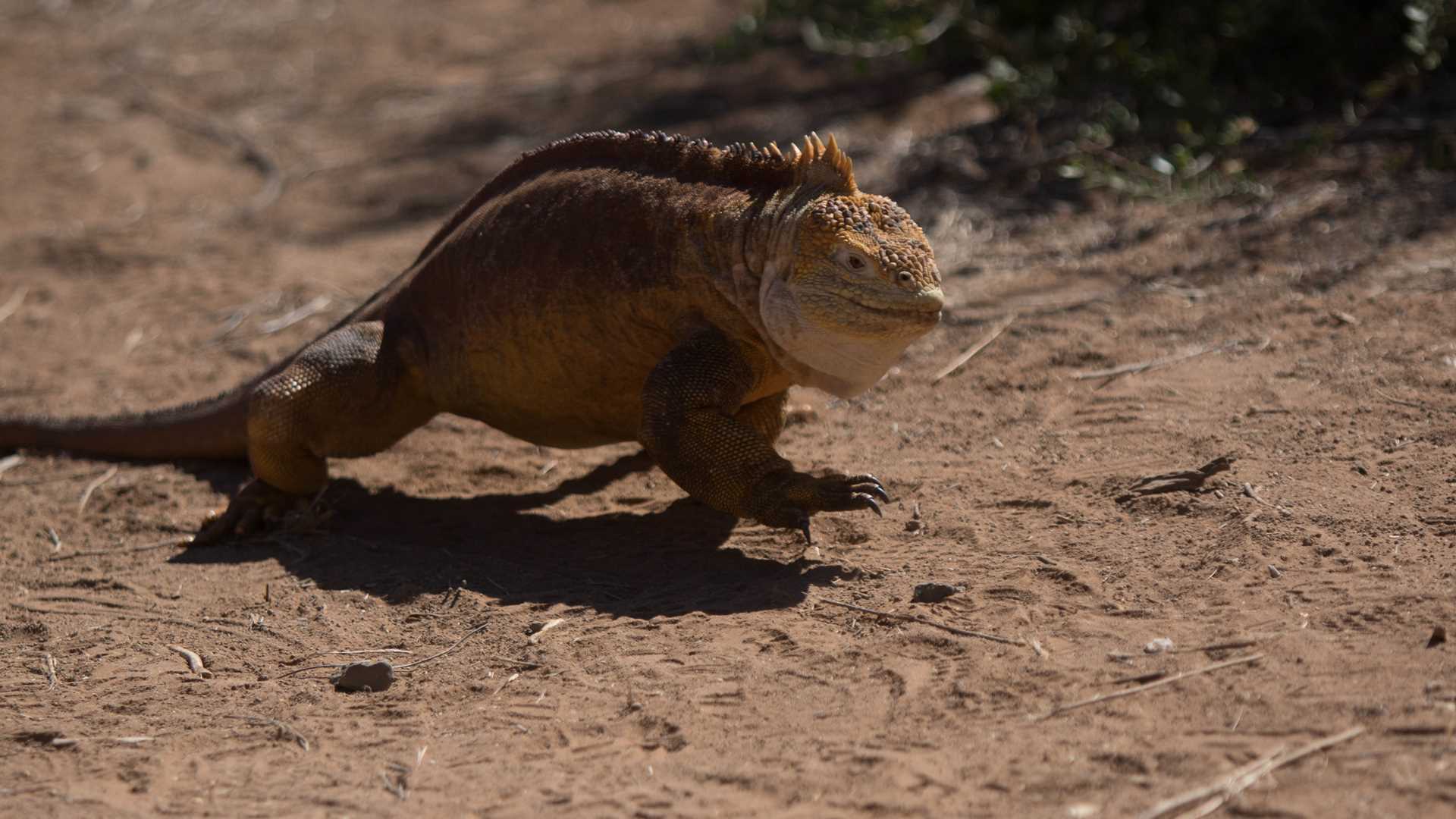This morning we had the opportunity to explore the northernmost region of Santa Cruz Island. Although we were still on the same island that we saw yesterday, this part of the island is very different than the south, where Puerto Ayora is located. The terrain here is much dryer and includes one of the densest prickly pear cactus forests in Galapagos, and that is the reason that land iguanas can live and thrive here. They are perfectly adapted for life in this kind of environment.
We started our day with a dry landing and a hike to a visitor’s site known as Dragon’s Hill, named after this endemic terrestrial reptile that roams this land. It was a successful morning outing, and we spotted lots of male iguanas guarding their territories, hoping to be selected by female land iguanas, which are wandering around freely.
Afterwards, we even had the chance to go deep water snorkeling, and to visit to one of many beaches formed along the coast on Santa Cruz Island. Our guests were very happy and satisfied after such a busy morning. Once everybody was back on board the National Geographic Endeavour, we shared our highlights from this morning’s outing, over a delicious and well-deserved Ecuadorian lunch.
For our afternoon excursions, we offered several different activities; our kayaking enthusiasts had the chance to paddle along the coastline, while our Zodiac riders explored the same area, looking for wildlife. The kids onboard also had the option of taking Zodiac driving lessons. We returned to the ship after our excursions, and we circumnavigated Daphne Major Islet. This parasitic cone is very meaningful to the scientific community, due to a study conducted by a couple of scientists on the most famous group of birds that exist only in Galapagos: the Darwin finch.
It was a wonderful way to end the day, out on the deck of National Geographic Endeavour, enjoying a glass of wine and watching the sunset behind Daphne Major. Another day is over, but our Galapagos adventure continues tomorrow!







